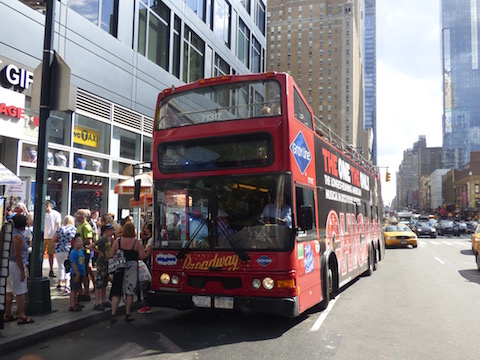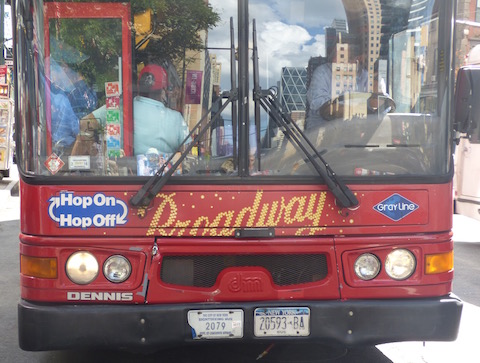 Abraham Lincoln
If given the truth, the people can be depended upon to meet any national crisis...
Abraham Lincoln
If given the truth, the people can be depended upon to meet any national crisis...
 Guildford news...
for Guildford people, brought to you by Guildford reporters - Guildford's own news service
Guildford news...
for Guildford people, brought to you by Guildford reporters - Guildford's own news service
Where Is This? No.172
Published on: 20 Aug, 2015
Updated on: 20 Aug, 2015
By David Rose
Back again after a couple of weeks away. My wife, daughter and I went on a fabulous road trip of the USA, taking in North and South Carolina, Georgia, Tennessee, a bit of Mississipi and Alabama, finishing off with a few days in New York City.
So, to recap on the previous post, the mystery vintage picture featured the Elim Chapel that once stood in Martyr Road. A number of people correctly identified it and added comments on its history.
The pill box structure can be found at what you could call the back end of Stoughton Barracks at the end of Little Street near the footpath to Worplesdon Road, always known as Pigs Alley. That’s because there were once a number of pigsties there tended to by the soldiers.
Click here to see the previous post with all the comments and also post number 170 in which there have been some replies to the question I posed about the grocery bus that used to call in the Stoughton area.
I have three mystery pictures this time as a bonus for the time I was away.
While in New York City I noticed that a number of the open-top tour buses, operated by a firm called Grey Line, were made in Guildford! Yes, wherever you go in the world you can find something from near home.
The busses have ‘DENNIS’ on the hubs caps and the same wording on the front. Inside by the driver’s seat is a metal plaque that reads ‘TRANSBUS INTERNATIONAL, DENNIS, GUILDFORD, ENGLAND’.
I just had to snap a picture of one (and besides we like mystery pictures with buses in them!). Can you say where it is parked? Go, on have a guess, it’s a very well known site in the centre of the city. . .

A general view of where the Dennis buses can be found in Manhattan. Do you know this famous location?
As a clue, above is a better night shot of the same location as the bus wasn’t in the best position where it had stopped.
Back to Blighty and this week’s mystery vintage picture taken in Guildford, England.
It is from the collection of pictures that have been passed to me from Ade Morley. Which street off the High Street was the ‘Sewing Box’?
The quirky picture was sent in by Caroline Reeves. She wonders what is this feature on a building not far from the town centre. Do you know where it is and what it is?
If you know the answers and can perhaps add some extra facts, please leave a reply in the box below. They will be published back to the usual time of Wednesday night next week along with two more mystery images.
Responses to Where Is This? No.172
Leave a Comment Cancel replyPlease see our comments policy. All comments are moderated and may take time to appear. Full names, or at least initial and surname, must be given.
Recent Articles
- Insights: The Band on the Titanic Strikes Up ‘Devolution!’ – Part 2
- GBC to Receive No Additional Money from Announced Settlement
- Woking Looking for Someone to Take On Victorian Hall
- Letter: A Surge of Discontent Calls for Accountability and Change
- Insights: The Band on the Titanic Strikes Up ‘Devolution!’ – Part 1
- Letter: Benefits of New Ash Bridge Are Dubious
- Letter: Unitary Authorities Will Allow More Coherent Planning
- Emergency Work on Embankment to Reopen Guildford to Effingham Line
- Letter: Twas the Night Before Christmas…
- Burglar Jailed Thanks To Quick Action of Ash Resident


Recent Comments
- Ben Paton on Insights: The Band on the Titanic Strikes Up ‘Devolution!’ – Part 1
- Roger Kendall on Letter: Benefits of New Ash Bridge Are Dubious
- Graham Vickery on Letter: Our National Parties Need a Reality Check
- Jim Allen on Letter: Benefits of New Ash Bridge Are Dubious
- Olly Azad on Merry Christmas and a Happy New Year to All Our Contributors and Readers!
- David Roberts on Merry Christmas and a Happy New Year to All Our Contributors and Readers!
Search in Site
Media Gallery
Dragon Interview: Local Artist Leaves Her Mark At One of England’s Most Historic Buildings
January 21, 2023 / No Comment / Read MoreDragon Interview: Lib Dem Planning Chair: ‘Current Policy Doesn’t Work for Local People’
January 19, 2023 / No Comment / Read MoreA3 Tunnel in Guildford ‘Necessary’ for New Homes, Says Guildford’s MP
January 10, 2023 / No Comment / Read More‘Madness’ for London Road Scheme to Go Ahead Against ‘Huge Opposition’, Says SCC Leader
January 6, 2023 / No Comment / Read MoreCouncillor’s Son Starts Campaign for More Consultation on North Street Plan
December 30, 2022 / No Comment / Read MoreCounty Council Climbs Down Over London Road Works – Further ‘Engagement’ Period Announced
December 14, 2022 / No Comment / Read MoreDragon Interview: GBC Reaction to the Government’s Expected Decision to Relax Housing Targets
December 7, 2022 / No Comment / Read MoreHow Can Our Town Centre Businesses Recover? Watch the Shop Front Debate
May 18, 2020 / No Comment / Read More















Carol Norris
August 21, 2015 at 2:57 pm
Picture 1: Chapel Street
John Lomas
August 22, 2015 at 12:27 am
The black and white picture shows Chapel Street and now a Japanese restaurant, according to Google Street View.
The photo would have been taken from the opposite corner of Chapel Street with Castle Street.
I’m fairly sure that during the late 1940s and early 50s there was a radio shop there, or a couple of doors down; it was run by an ex-services radio technician who built his own small radios and my father used to make cases to fit the chassis he made.
It was in his shop that we watched the 1946 Burnley v Charlton FA Cup final and later bought our first TV, a 9in Pye.
Ray Springer
August 23, 2015 at 10:12 am
Welcome back – glad you enjoyed your visit to the USA. Is the picture Broadway?
The Sewing Box was in Chapel Street near the junction with Castle Street.
Dave Middleton
August 24, 2015 at 12:50 pm
Got me stumped on the Guildford photos this week.
Interesting to see that American bus drivers seem to have the same inability to pull up close and parallel to the kerb as their British counterparts – back end sticking out in the road and passengers having to step into the gutter to board the bus.
Brian Holt
August 24, 2015 at 7:46 pm
The Sewing Box was the first shop on the left when entering Chapel Street from Castle Street.
In the late 1940s it was a sweet shop run by two ladies. I remember going through the shop door and there were two steps to go down into the shop. It is now the Thai/Japanese restaurant.
Doug and Bill Staniforth
August 25, 2015 at 3:34 pm
Times Square, New York.
The Sewing Box was in Chapel Street.
We’re not sure about the quirky photo but statistically it is has something to do with a bus (not a speedboat).
Are you sure it is not a speedboat? Your imaginations are normally quite capable of creating speedboat images anywhere, I thought. Ed
Chris Townsend
August 26, 2015 at 1:47 pm
The Sewing Box was at the Castle Street end of Chapel Street, and is a restaurant today.
In the 1950s, was the shop in the picture one of RFH Porter’s TV and radio shops? If so, then the Sewing Box must have been later, judging by the cars but I don’t remember any boutiques in Guildford in the 1950s.
There are two of the quirky features (are they ventilators?) at Pewley Hill Centre, formerly Holy Trinity School, at the junction of Pewley Hill and South Hill.
John Lomas
August 27, 2015 at 9:12 pm
In response to Chris Townsend, the sewing box would have been a haberdashery rather than a boutique.
And thanks for reminding me of the name of my dad’s mate, Porter. I think Ron might have been his first name.
Chris Townsend
August 29, 2015 at 6:03 pm
A Mr. Newsham was a technician at Ron Porter’s shop. Our first TV (14 inch?) was bought from there in 1955, in time for ITV. I remember the step down into the shop, and I think the ceiling was low, too.
There was another larger shop opposite, for sales rather than repairs, from memory. Ron’s father was the chimney sweep who lived just along the street, to the right of the Centenary Hall now occupied by Loch Fyne.
Bernard Parke
August 30, 2015 at 1:57 am
In those days the cheaper sets were known as table models with a 9in screen.
Possibly a Ferguson with a dark screen. As the screens were so small some people bought a large magnifying which was placed over the screen.
The upmarket set would be known as a console withe a 12in screen, possibly a Cossor.
The controls would be just an on/off switch, volume control and possibly one for the tone.
Prior to 1954 there was only one channel.
Every time a car would pass the picture would distort in an arlarming fashion.
The cost of a console model would be about £80. Possibly the equivalent of several months wages.
To own a set was on a par of owning a car!
The majority of people could not afford a car and mostly would just cycle to and from work!
Bernard Parke
August 30, 2015 at 8:21 pm
Perhaps it is interesting to recall that in those early post war days televisions were not in general use and on at least two occasions of national interest those people who could afford televisions would invite those of lesser means into their sitting rooms to watch on televisions the unfolding of national events.
The first major event was of course the royal wedding in 1947. However, this was perhaps truncated as TV cameras were not allowed into Westminster Abbey.
This next major event was in 1953 the year of the coronation when similar parties took place.
It was thought that housewives would find it difficult to cook at that time so a new dish was devised to help in them in this chore. It was called “Coronation Chicken”.
Chicken was very much a luxury item in those days when food rationing was still in force.
[David Rose: Haven’t I read this before somewhere? In our book Guildford Remember When.]